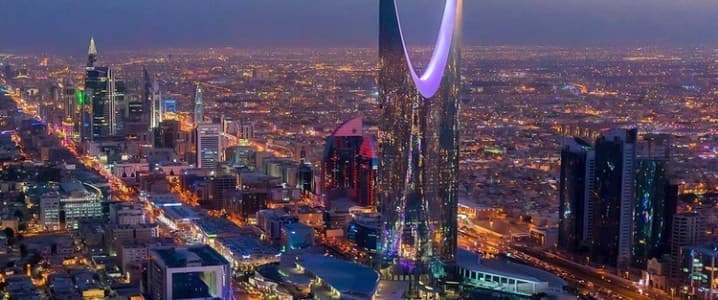Saudi Arabia is making significant strides in renewable energy with an investment of approximately $8.3 billion in new solar and wind projects. The agreements, signed by utilities giant ACWA Power and the power division of state oil company Aramco, encompass seven new solar photovoltaic (PV) and wind projects, collectively generating a total capacity of 15 gigawatts (GW). This initiative aligns with the Kingdom’s broader strategy to diversify its energy portfolio and reduce reliance on oil for electricity generation.
The recent agreements demonstrate Saudi Arabia’s commitment to expanding its renewable energy infrastructure without compromising its role as the world’s leading crude oil exporter. As the nation enhances its renewable energy capacity, it aims to displace a portion of the fuel used for domestic power generation, thus freeing up more oil for export. This dual approach allows Saudi Arabia to maintain its substantial presence in global oil markets while transitioning towards renewable sources.
Major Investments in Renewable Energy
According to the official Saudi Press Agency, the signing of these agreements represents the largest global capacity allocated to renewable energy projects in a single phase. The partnerships include the Water and Electricity Holding Company (Badeel), which is owned by the Public Investment Fund, and Aramco Power. The Kingdom’s ambitions are underscored by its goal to achieve a renewable energy generation share of approximately 50% by 2030, with total installed capacity reaching 130 GW.
As of October 2024, Saudi Arabia has already installed 44 GW of renewable energy capacity, with an additional 20 GW expected to be operational soon. This progress reflects a comprehensive geographical survey conducted last year to identify optimal sites for solar and wind projects.
The Kingdom is also pursuing a Liquid Fuel Displacement Program, targeting a reduction of 1 million barrels per day (bpd) of liquid fuels in power generation. This initiative is crucial as Saudi Arabia currently relies heavily on direct crude burn for electricity, meaning that displacing this demand could significantly bolster its export capabilities.
Commitment to Oil Production
Despite the shift towards renewables, Saudi Arabia maintains its commitment to oil production, with plans to sustain a maximum capacity of 12.3 million bpd. This assurance was reiterated by officials during the annual investment forum in Riyadh, emphasizing that the Kingdom will continue to play a pivotal role in ensuring global energy security.
By 2027, Saudi Arabia expects to produce more than 1.1 million bpd from oilfields currently under development, which will help offset declines in older fields. The dual strategy allows the Kingdom to navigate the evolving energy landscape while reinforcing its position as a leader in oil production.
Saudi Arabia’s Energy Minister, Prince Abdulaziz Bin Salman, expressed confidence in the Kingdom’s strategy, stating, “We are committed to maintaining 12.3 million bpd of crude capacity and we are proud of that.” This statement reflects the ongoing balancing act between advancing renewable energy initiatives and preserving a robust oil sector.
Additionally, Amin Nasser, President and CEO of Saudi Aramco, recently remarked on the global energy transition, noting that many countries may be struggling to implement effective energy strategies. He emphasized that a flexible, tailored approach is essential, as the path to transition is fraught with challenges.
Saudi Arabia’s investment in renewable energy signifies a pivotal moment in its economic diversification efforts. While the Kingdom embraces the future of energy, it remains steadfast in its commitment to oil production, ensuring its continued influence in the energy market.
